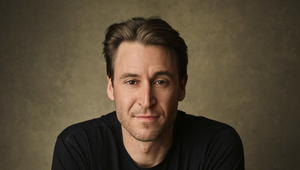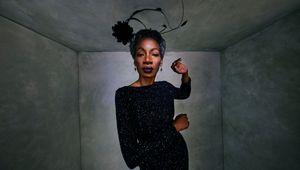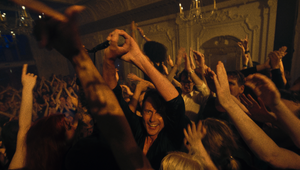
LBB Film Club: Saint Maria's Way

It would be fair to say that horror shorts don’t often make our Film Club series – not because we don’t love the genre, but because directors perhaps don’t tend to explore the genre in short form as often as they might do others. However, this isn’t the case for director Chris Turner, AKA Favourite Colour: Black, repped by Octopus Inc.
His newest horror short ‘Saint Maria's Way’, shortlisted for Screamfest 2024, started from Chris’ and writer Chelsea Kania’s frustration with the increasingly dire lack of safety for women on the street at night. The numerous well-publicised cases in which CCTV was pivotal to the investigation of the crimes committed against women were part of what gave way for the idea.
But this far isn’t Chris’ first time dabbling in the genre - in 2022 he made another short horror called ‘Leopard Heels’, which ended up winning the Audience Award at NYC’s 2022 Halloween Film Festival and was also selected for Screamfest in the respective year. Beyond this, he’s created shorts that have had horror elements to them, while most of the work he does with artist Gazelle Twin has its roots in horror as well. Now, Chris has another feature in development inspired by some of his favourites – ‘The Shining’ and ‘The Haunting’. “It’s a classic-style ghost story set in the contemporary world of the music industry, can’t say any more right now!”
But back to ‘Saint Maria's Way’. The fear it induces isn’t necessarily nightmare-inducing or one that would make you squeamish. Rather, it creeps up on you and leaves you anticipating the worst throughout the film’s painstakingly slow burn. “I find films that leave me with a sense of dread more effective in the long term than jumpscares and gushing blood,” reflects Chris.
'Saint Maria’s Way' has been selected to play at Screamfest LA this October
Today, I spoke with Chris about how he created the iconic look of the film, the location scouting behind it and more.
LBB> What led your creative vision on the project, and where did you get your inspiration?
Chris> The idea for both the film’s concept and its execution are inseparable. It felt like a story that could only be told via the language of CCTV. Visually, it’s an aesthetic I’ve always loved, but watching real stories that have used CCTV to catch murderers made me realise just how bizarre the whole concept is. Given there’s an estimated 6 million cameras in the UK, it seems the footage gathered is still most useful in the investigation - rather than the prevention - of the crime.
LBB> Tell me about how you achieved the CCTV camera look throughout, and how you made it look realistic.
Chris> CCTV is ubiquitous now – it’s not just the official cameras on the city streets, but people’s home security, video doorbells, entry-phones and so on. Some are old tape-based systems, some are modern digital cameras, some have night vision. It provides a varied palette to work with.
We used a range of cameras, but it was all very lo-fi. Sometimes it was just an iPhone, but with the addition of cheap add-on lenses, and occasionally using apps to affect the footage. But we also used miniDV and Hi-8 cameras to get different textured material. With the older tape formats we were able to digitise the footage through cables which we could mess around with in order to achieve really beautiful analogue distortion - of course you can use post filters for similar results, but I’ve always loved the chaos element of the real thing.
The part that drove me crazy was adding the text information to the footage. From the moment we had the idea until the final stages of the project, I was researching real CCTV - obsessively watching programs like ‘24 Hours in Police Custody’ and countless other similar shows in order to get the text and time code information looking genuine. I amassed a huge folder of references. Every shot in the final film is based on some real CCTV shot, down to the formatting of the numbers and dates, and the resolution of the graphics. A lot of the scenes were then re-shot from screens to help embed these layers further.
We also did a lot of work degrading the footage, posterising the frame rates to get that staccato feel of the format, and we even used a little AI to extend the wide angle field of view for some of the compositions.
LBB> Talk to me about the dialogue in the film - what was the writing process like?
Chris> Early on, we realised that CCTV rarely comes with sound - and even if it does it’s mostly ambient, unlikely to usefully capture dialogue. So we decided to make it all happen during a phone conversation between the two main people in the film - a woman walking home, and a police officer on the other end of the call. The idea being that the CCTV footage has been synced with the call via use of time code.
Initially, we worried this was unrealistic, but watching all those police procedural shows made us realise it’s actually pretty standard.
LBB> What were you looking for with the casting, and how did that part of the pre-production go?
Chris> There’s only really three people in the main bulk of the film (plus a few extras). They’re all played by people I’ve worked with before. But we had Isaura (Barbé-Brown) in mind as the main character all along, as I’ve had so many conversations with her over the years about making some kind of horror film together. She’s a major fan of the genre, so much so that she regularly turns up on podcasts like ‘The Final Girls’ and ‘The Evolution of Horror’. So Isaura was part of the project from an early stage.
LBB> Tell me more about the locations in the film and how they help the narrative.
Chris> It was mainly shot over two nights in Croydon at the beginning of autumn last year. We filmed the majority of the footage there, as I remembered a great underpass I’d been into when I was on a recce for a music video years before.
We also shot more nights in Dalston, the Barbican and Crystal Palace. The aim was to make the location feel like a kind of empty ‘anywhere’ city. It’s actually pretty hard to find streets in London with nobody around at night. There was always so much activity and background noise.
LBB> What was the most challenging part of creating the film? And how did you overcome these challenges?
Chris> Setting out on this project, I’d imagined it was going to be easier than most shoots, because we were using tiny cameras and had very little crew and kit. My last film had a crew of about 25 – on this one there were six of us most nights, and that included the cast. But no film is easy to make. There were all kinds of challenges, from getting permission to shoot in certain areas, to going guerrilla style in others, carting around a five-metre-tall tripod to get the high angles, working without the usual back-up of an art and camera department (myself and photographer Teri Varhol operated all of the cameras).
The cast usually had to get ready on the street in the middle of the night. For the most part this wasn’t a problem until we were doing a very wide shot of Isaura wearing a torn, blood stained top and no shoes. We were a long way away from her with the camera zoomed right in when we saw a guy approach her. Of course, we thought he was going to ask her if she was OK, but instead he just asked if she had a cigarette, seeming not to notice all the blood.
Also, it’s hard working with such a detached point of view. CCTV doesn’t really allow you the usual range of film language – we couldn’t cut away to a detail, or use much camera movement. Everything had to be within the restrictions of the format, which is pretty universally familiar now, so it would’ve been obvious if we had cheated too much. We found our own visual language: instead of cutting to a nicely composed close-up, we zoomed or cut into a fuzzy image or re-shot the same image in close-up from the screen. Instead of moving cameras on dolly and track, we kept a fixed anchor point and panned with the action.
LBB> Any final thoughts?
Chris> I’m glad that horror is going through a really inventive and productive period at the moment. It’s no longer thought of as cheap or tawdry cinema, and is largely appreciated for the art form it really is. I dislike the snobby term ‘elevated horror’, but the very fact that it exists shows that the genre has an expanding audience. Also, it’s introducing us to astounding new talent like Rose Glass, whose ‘Saint Maud’ is (in my opinion) the best horror film for a decade.
Horror quite naturally creeps into music videos too – it has done for years (just think of the work of Floria Sigismondi and Chris Cunningham), but perhaps understandably it doesn’t influence a lot of commercial work. There have been a few exceptions no doubt, but if anyone out there wants to make a truly terrifying TV ad (or even a bit of a creepy one), I’m up for the challenge!















